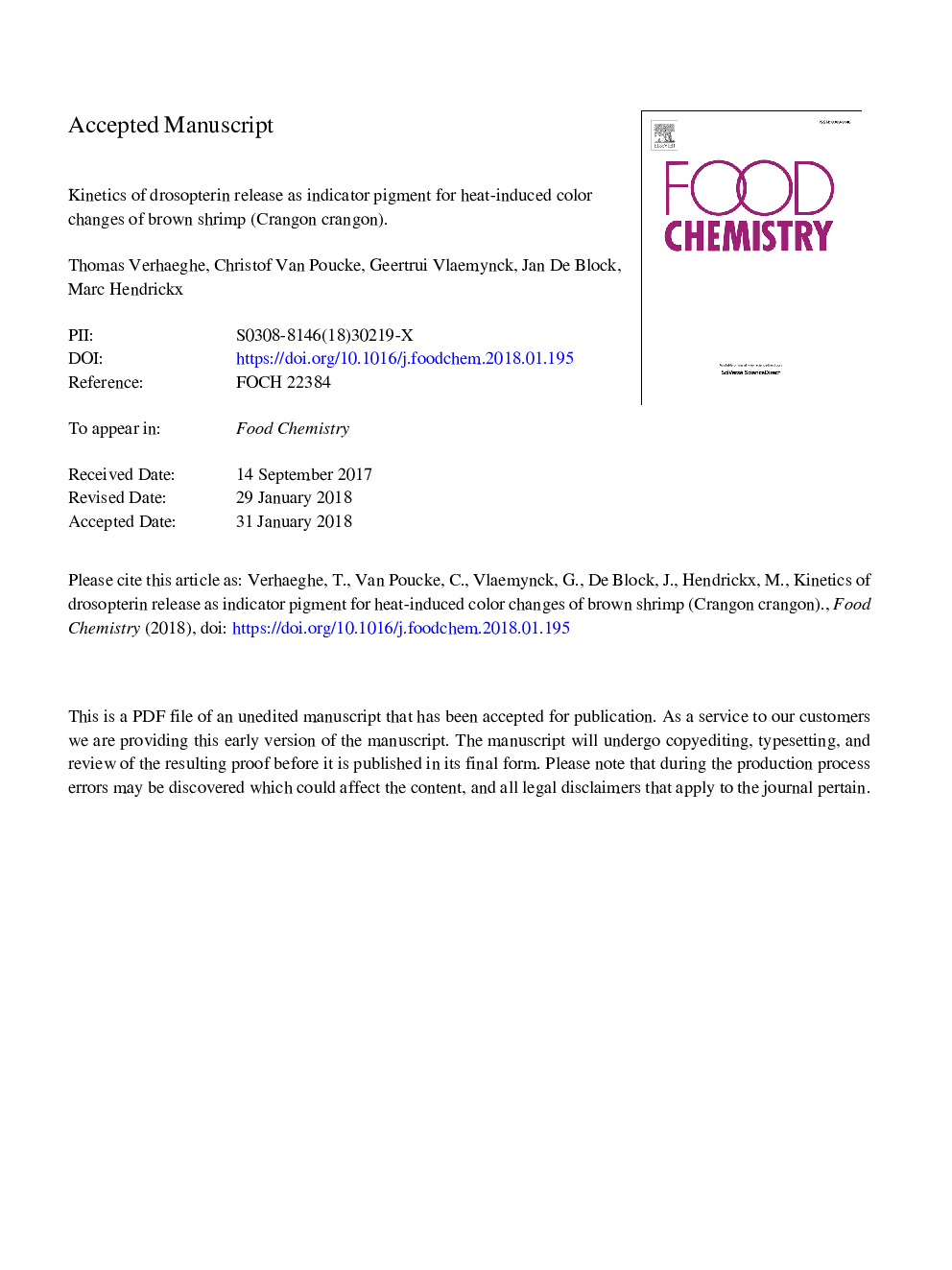| Article ID | Journal | Published Year | Pages | File Type |
|---|---|---|---|---|
| 7585575 | Food Chemistry | 2018 | 31 Pages |
Abstract
Heat-induced color changes of crustaceans are commonly described as the release of astaxanthin. In this study on Crangon crangon, it was found that astaxanthin plays a minor role in the (dis)coloration. By LC-HRMS, two polar, process dependent pigments were found. One pigment was identified as riboflavin and one as drosopterin (level-2 certainty). Thermal treatments had highest effect on drosopterin concentration changes and were chosen as indicator for a kinetic study of heat-induced color changes. The kinetic data fitted a consecutive step model (r2â¯=â¯0.971), including a first step in which drosopterin was released (kd,85°Câ¯=â¯0.95â¯Â±â¯0.09â¯minâ1; Eadâ¯=â¯105â¯Â±â¯4â¯kJ/mol) and a second step where drosopterin is degraded (kb,85°Câ¯=â¯0.02â¯Â±â¯0.002â¯minâ1; Eab =â¯190â¯Â±â¯15â¯kJ/mol). The kinetic model shows that shrimp should be heated at lower temperatures (<80â¯Â°C) than the heating temperatures used by fishermen (86-101â¯Â°C), creating opportunities for quality optimization. Therefore, this study delivers essential information needed in a comprehensive quality optimization study of the cooked brown shrimp.
Related Topics
Physical Sciences and Engineering
Chemistry
Analytical Chemistry
Authors
Thomas Verhaeghe, Christof Van Poucke, Geertrui Vlaemynck, Jan De Block, Marc Hendrickx,
